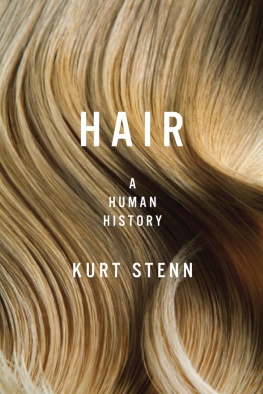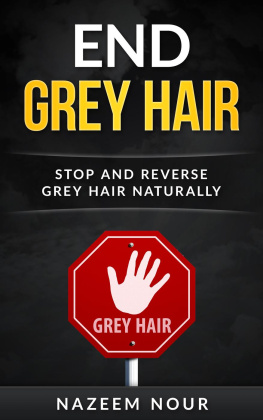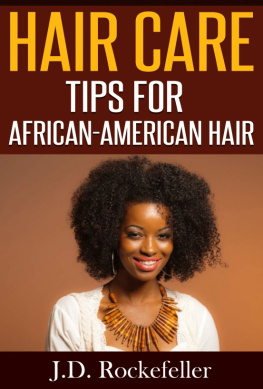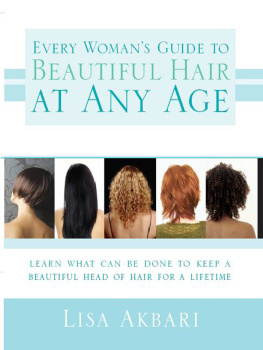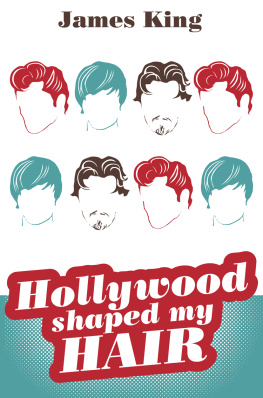Stenn - Hair : a human history
Here you can read online Stenn - Hair : a human history full text of the book (entire story) in english for free. Download pdf and epub, get meaning, cover and reviews about this ebook. year: 2016, publisher: Pegasus, genre: Detective and thriller. Description of the work, (preface) as well as reviews are available. Best literature library LitArk.com created for fans of good reading and offers a wide selection of genres:
Romance novel
Science fiction
Adventure
Detective
Science
History
Home and family
Prose
Art
Politics
Computer
Non-fiction
Religion
Business
Children
Humor
Choose a favorite category and find really read worthwhile books. Enjoy immersion in the world of imagination, feel the emotions of the characters or learn something new for yourself, make an fascinating discovery.
- Book:Hair : a human history
- Author:
- Publisher:Pegasus
- Genre:
- Year:2016
- Rating:4 / 5
- Favourites:Add to favourites
- Your mark:
- 80
- 1
- 2
- 3
- 4
- 5
Hair : a human history: summary, description and annotation
We offer to read an annotation, description, summary or preface (depends on what the author of the book "Hair : a human history" wrote himself). If you haven't found the necessary information about the book — write in the comments, we will try to find it.
Hair : a human history — read online for free the complete book (whole text) full work
Below is the text of the book, divided by pages. System saving the place of the last page read, allows you to conveniently read the book "Hair : a human history" online for free, without having to search again every time where you left off. Put a bookmark, and you can go to the page where you finished reading at any time.
Font size:
Interval:
Bookmark:


To Judit
til the rocks melt with the sun
(after Robert Burns)
CONTENTS
HAIR

T he idea to write this book came to me in a barbers chair.
I live in a small university town, and although I have a choice of barbershops huddled in sort of a collective obeisance before the imposing school gate, I choose to frequent one located in a quiet neighborhood on the outskirts. Marked by a traditional red-and-white spiral pole, the shop sits in the adapted living room of a small, white, wooden-framed cottage. The front wall of the room has been replaced by a large window opening onto the street; on the left are four bent-wood waiting seats with an end table; in the center are two swivel barber chairs, only one of which is ever staffed. The walls are bedecked with golfing paraphernalia: a picture of a golf green with a cluster of four players about the pin, a photo of Sam Snead with white hat, suspended antique chipping irons, signed pictures, and the like.
One morning several years ago, when it was my turn, I settled in the chair as usual; the barber covered me with a white cape, followed by a tissue-paper collar.
So, whats it today, Doc?
Short. Light trim. The usual, but not my brows.
Though on occasion both of us share family storiesthe wife, the kidswe have spoken little over the years. For the most part, we sit and enjoy the silence between the clip of his scissors and the tick of the wooden clock on the back wall. So I was rather surprised one day when he asked, Say, Doc, what do you do?
Im a university physician.
Yeah, I know that, but what kind? I mean, what do you do? He held up his clipper and fixed his gaze on me.
I do research on hair.
His eyes widened and his face broke into a smile. Aw, come on, Doc!
No, I really do, I replied.
Okay, if you say so. He shrugged, still unsure if I was teasing him or not, and went back to work.
Hair as a body part meriting serious cultural and scientific attention isand has been throughout historya foreign concept to many people, including my barber. For him, hair is limited to the stuff on your head, which you position properly to get the right look. There is only one way of thinking about hair and thats it.
Since then, I have noticed that many people adhere to this limited and myopic view. They are unaware of the bigger picture. They see little to no relationship between hair and fur, hair and history, hair and health, or hair and basic biology. They are unaware that hair has played a role in the Western settlement of North America, in Middle Age European trade, in modern criminology, in religion, in art, in orchestral instruments, and now in modern biological research. They are unaware that there are many people throughout history who have worked with hair in very different ways, well beyond the barber or salon worker. They are unaware of the advances in science that promise new, more effective tools for hair care: tools to put hair follicles where none now grow, tools to curl hair that is now incorrigibly straight, or tools to uncurl hair that is corkscrew rigid.
These realizations prompted me, a lifelong hair-follicle scientist, to write a book giving the whole picture of hair and the part hair has played, and continues to play, in human life. Hair evolved as an environmental barrier for our primitive ancestors. When modern humans lost body hair, they appropriated the skin and hair of neighboring mammals for cover. With time, man found wide uses for animal hair, far beyond cloth. Hair, because of its unique properties, has shaped human evolution, social communication, history, industry, economics, forensics, and art. The topic is expansive, describing not only the role of body hair in sending social messages but also the impact of hair on human history, economic growth, artistic expression, forensics, archeology, science, and industry.
The common thread and focus of this book is the hair shaft, the beautiful straight or curled filament that decorates the skin surface. I tell the story from the perspective of people who have a particular interest and investment in hair, who know and exploit different features of hair, each of whom looks at the use and significance of hair in his or her own distinctive way. For the hair-loss patient or the bearded cleric, whats most important is the message hair sends. For the fur trader and wool worker, its hairs insulating and cloth-making properties. For the paleontologist, its the role hair has played in protecting mammalian life. For the cell biologist, its the ability of the hair follicle to re-form itself; for the violinist, its the bow; for the criminologist, its the incriminatory or exculpatory evidence; for the cosmetician and wigmaker, its the means for building a social message; and for the artist, its the medium for sculpture. Because each sees hair differently, in terms of function and impact, each refers to the same essential properties using different words; for example, fur, wool, beard, and hank refer variously (depending on the speaker) to an assemblage of hair, while whisker, fiber, bristle, and shaft refer to individual hairs. From the viewpoint of the biologist, all these words refer to the same structure, though they recognize differences in size, shape, and growth density. From the standpoint of this book, as I address the larger question of how hair has impacted the history of man, I will take the biologists perspective and refer to all these fibers as hair or hair shaft.
Whats described here is only the glimpse of a much larger story, for in all fairness each group of hair workers deserves its own book of equal or greater size. While exploring the diverse world of hair, I traveled widely and met extraordinary peoplewig makers, artists, luthiers, criminologists, and otherson a journey that has taken me to medical clinics, patient support groups, molecular biology laboratories, dinosaur museums, fur merchant associations, sheep farms, textile mills, and hair art exhibitions. In the telling, I have sacrificed the comprehensive for the panoramic. Accordingly, not only have I omitted many people who work with hair, but I emphasized the Western European and North American experience, knowing full well that I could have told the same story from an Asian or African perspective. I made these decisions based on my own personal knowledge and on my attempts to limit the book to a length attractive to the average reader. I have tried to simplify the science and keep those descriptions pithy and illustrative. For the more inquisitive reader, I offer an extensive glossary, chapter notes, and references.
A recurring theme throughout is that all hairs, from wherever they arisehuman, sheep, beaver, platypus, or porcupineare alike, though they vary in degree: long or short, stiff or soft, black or white, sticky or smooth. So, a hair is a hair from wherever it comes. But, to begin, we must ask: What exactly is hair and from where does it come?

The first hairs arose in a reptilelike, mammalian ancestor.
A ll biological forms at any levelwhether societal, cellular, or organismalmust separate themselves from the outside in order to survive: Each must have a wall. At the societal level, that wall shields a kingdom from its enemies. At the cellular level, the membrane, another type of wall, surrounds, defines, and contains the cell nucleus and cytoplasm. At the organismal levelbe it frog, chicken, or monkeythat wall is skin. Our story must therefore start with mammalian skin, not only because hair grows out of skin, but also because hair enhances the wall-like properties of skin by buffering it from trauma, protecting it from temperature extremes, and sensing the environment before actual contact.
Next pageFont size:
Interval:
Bookmark:
Similar books «Hair : a human history»
Look at similar books to Hair : a human history. We have selected literature similar in name and meaning in the hope of providing readers with more options to find new, interesting, not yet read works.
Discussion, reviews of the book Hair : a human history and just readers' own opinions. Leave your comments, write what you think about the work, its meaning or the main characters. Specify what exactly you liked and what you didn't like, and why you think so.

